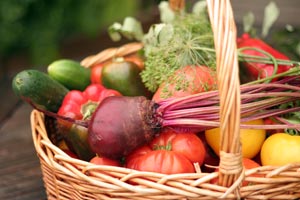 A Quick and Easy Guide to Growing Your own Vegetables
A Quick and Easy Guide to Growing Your own Vegetables
In time of financial struggle, and especially in modern times when families are increasingly health and diet-conscious, growing your own vegetables is a great means of saving money, while still giving your family access to organically grown nutrients.
Growing your own vegetables in your garden can be incredibly rewarding, but can also be quite daunting to those who aren’t avid gardeners. Follow the tips (below), to ensure your success in maintaining your own vegetable patch.
1. Choosing the location for your vegetable patch
Vegetables require a lot of sunshine to grow, so make sure you pick the spot in your garden which gets the most sunlight before making your vegetable patch. Vegetables tend to grow stronger and more resistant to pests and disease when they have received a lot of sunshine. Sunshine also means that vegetables such as peppers, onions and carrots have a sweeter taste.
Once you have chosen the area of your garden with the most sunshine, it is important to make sure you have the right soil to grow the vegetables in. Most domestic soil as is found in gardens is suitable for growing vegetables, however in case where the soil is full of stones or clay, a raised bed might need to be made.
2. Remove all weeds
Weeds in a vegetable patch just cause unnecessary competition for nutrients and water with your fledgling vegetables. To prevent this, make sure that you sufficiently remove all weeds from your vegetable plot before you begin planting your vegetable seeds.
3. Build a raised bed
There are many advantages to having a raised bed. Raised beds are ideal for letting more sunlight get to the vegetable plants in a shady garden. They also improve drainage and make vegetable patches more accessible, as it is easier to maintain crops when you don’t have to bend as much. It is also easier to control a vegetable patch which has been split and segregated into manageable raised beds. To build a raised bed, use planks of wood (2x4), turned on their side, and fixed with nails to posts at the corners. Drive these posts into the soil, and add excess soil to the top of the bed.
4. Tips for planting vegetable seeds
As some vegetables don’t like being transplanted as seedlings, you’re better off planting seeds directly into your garden, instead of first trying to grow the seeds indoors. Follow the instructions on the seed packet for specific rules when planting your chosen vegetable seeds. However, generally, gardeners should ensure that the soil is sufficiently dried out and sufficiently warm before planting seeds. This usually means waiting until at least spring to plant seeds. Early planting is not advised, as vegetables which get off to a bad start, often don’t grow to full maturation. When planting your vegetable seeds, wide row planting is the most common pattern to plant seeds in. This involves sprinkling a collection of seeds over a 10-16 inch width row. This method means it is easier to water and weed the bed once the seeds have been planted.
5. Slugs, snails and pests
Slugs, snails and other pests tend to hide and multiply in areas of a vegetable patch covered with weeds, long grasses and leaves. By keeping your patch tidy, and empty of weeds, you are reducing the risk that these pests will destroy your crops. Try to structure your vegetable patch so that there is a series of small paths in between the vegetables. This will make it more difficult for pests to hide, and so should also help to reduce the number of pests in your vegetable garden.